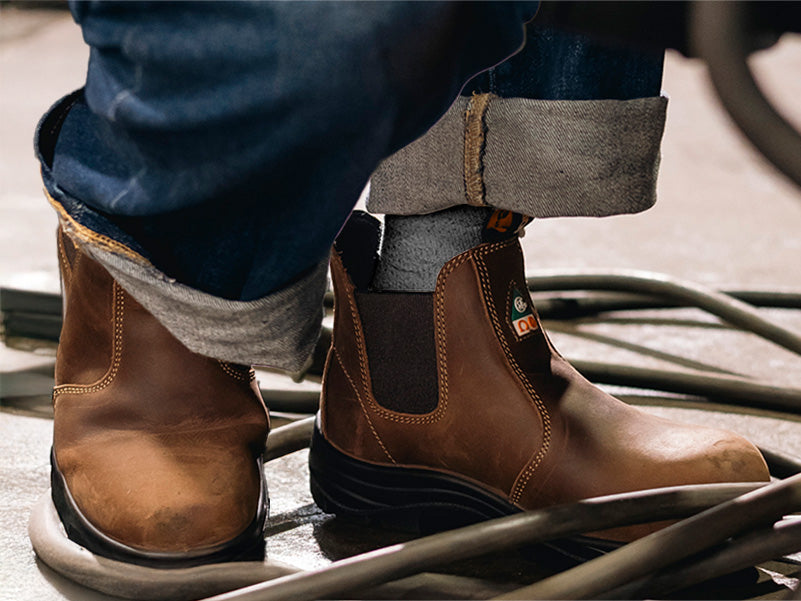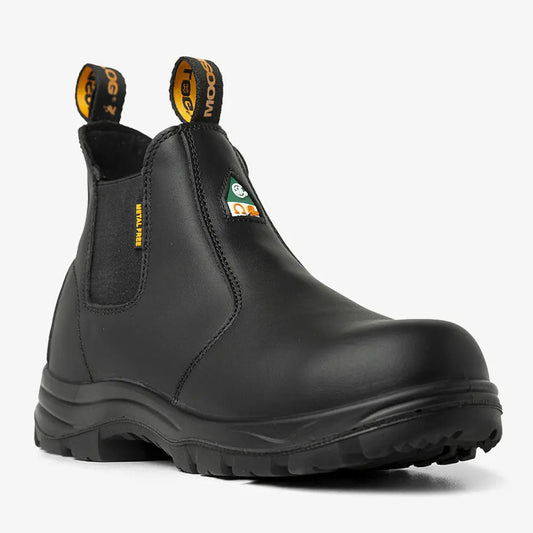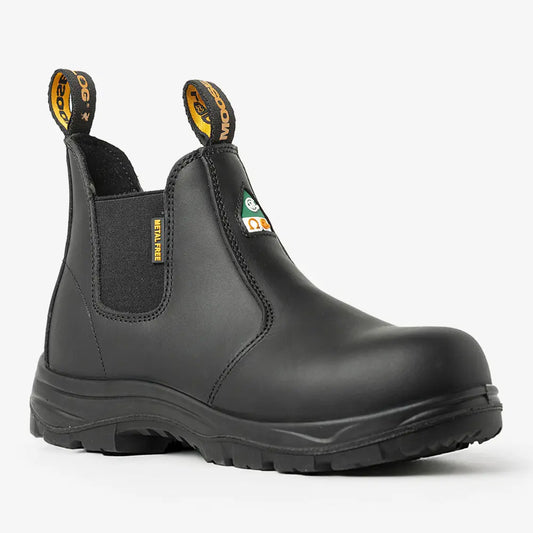
The Importance of CSA and ASTM Certifications in EH Rated Work Boots
Introduction
When you're exposed to potential electrical hazards on the job, EH rated work boots are not just an accessory—they're essential. But how can you be certain your boots offer real protection? That’s where certifications from CSA and ASTM come in. These standards aren't just industry jargon—they are evidence that your footwear has been tested and approved to keep you safe.
In this post, we’ll explore what CSA and ASTM certifications mean, how they’re tested, and why these standards are absolutely critical when selecting EH rated, puncture-resistant work boots.
What Are CSA and ASTM?
Let’s start with the basics:
- CSA stands for the Canadian Standards Association. This organization develops safety standards for a wide range of products, including personal protective equipment (PPE).
- ASTM stands for the American Society for Testing and Materials, now known as ASTM International. Like CSA, it sets strict guidelines to ensure equipment safety and performance.
Both organizations help ensure that safety footwear meets essential criteria, especially when dealing with Electrical Hazard (EH) risks and puncture-resistant protection.
Explore their websites for official resources:
Why Certifications Matter
Imagine this: you're working on a construction site and accidentally step on a live wire. Without certified EH rated boots, that mistake could be fatal. With certified boots, your chances of avoiding electric shock drastically improve.
Certified EH rated boots provide:
- Verified protection against electrical currents up to 18,000 volts (under dry conditions)
- Puncture-resistant midsoles for additional safety
- Peace of mind knowing your gear meets regulated standards
Without these certifications, there's no guarantee your footwear has been properly tested.
ASTM Certification for EH Rated Work Boots
The standard used in the U.S. is ASTM F2413. It lays out several safety requirements for work boots, one of which is Electrical Hazard (EH) resistance.
Key Features of ASTM EH Boots:
- Protection against 18,000 volts at 60 Hz for one minute with no current flow exceeding 1.0 mA
- Must be clearly labeled as "EH" on the inside tag
- Must also meet other safety criteria like impact and compression resistance, depending on the boot design
Boots that meet ASTM standards are considered secondary protection against electrical hazards—meaning they don’t replace primary PPE like rubber gloves or mats, but they significantly reduce the risk of injury.
CSA Certification for EH Rated Work Boots
In Canada, CSA Z195 is the benchmark for protective footwear. It’s a comprehensive standard that includes EH protection as well as:
- Grade 1 protection for toe impact and compression
- Puncture-resistant plates for underfoot protection
- Electric shock resistance similar to ASTM
CSA certified boots will have a green triangle with a Grade 1 label and a white rectangle with an orange Greek letter “omega” (Ω), indicating EH protection.
This certification ensures the boots are not only EH rated, but also puncture-resistant, which is especially important for construction, mining, or industrial jobs.
Comparing ASTM vs. CSA for EH Work Boots
|
Feature |
ASTM F2413 |
CSA Z195 |
|
Region |
United States |
Canada |
|
EH Voltage Protection |
Up to 18,000 volts |
Up to 18,000 volts |
|
Labeling |
EH tag inside the boot |
White rectangle with Ω symbol |
|
Includes Puncture Resistance |
Optional |
Required for EH boots |
|
Toe Impact Rating |
I/75, C/75 (if applicable) |
Grade 1 (if applicable) |
If you’re working in the U.S., ASTM is typically the go-to. In Canada, CSA Z195 is the standard. That said, boots can be dual-certified, providing the best of both worlds.
How to Check if Your Boots Are Certified
Here are a few simple ways to verify certification:
- Look Inside the Boot: Certification labels are usually printed on the inside tongue or lining. For ASTM, look for “EH” along with the standard number (e.g., ASTM F2413-18). For CSA, look for triangle and omega symbols.
- Check Product Descriptions Online: Reputable brands list certifications clearly in product specs.
- Ask the Manufacturer: If you’re unsure, contact the seller directly or refer to their safety documentation.
MooseLog, for example, provides CSA and ASTM-certified work boots on MooseLog.com, ensuring all products meet strict safety standards for EH and puncture resistance.
Choosing Certified Boots for Your Job
When choosing EH rated boots, make sure they are:
✅ Clearly certified (CSA, ASTM, or both)
✅ Labeled correctly with certification marks
✅ Built with puncture-resistant protection
✅ Designed for your specific work environment
Boots without these credentials might look similar—but they don’t offer the same level of verified safety.
Final Thoughts
Certifications like CSA Z195 and ASTM F2413 aren’t just optional—they’re critical. They ensure your EH rated work boots have been rigorously tested and meet the highest safety standards for electrical hazard protection and puncture resistance.
When your safety is on the line, don’t take chances. Choose boots that carry the certifications to back up their claims.
Ready to invest in certified safety footwear? Visit MooseLog.com for a selection of lightweight, CSA and ASTM certified, puncture-resistant EH rated work boots designed for hard-working professionals like you.






